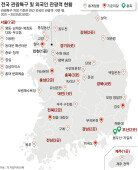Concept car wins 1st place at famed PACE competition
Concept car wins 1st place at famed PACE competition
Posted September. 14, 2012 02:36,
About 200 quasi-experts from 26 universities from eight countries filled the Grand Ballroom of the Regal International East Asia hotel in Shanghai July 26. The occasion was the awards ceremony of the 2012 PACE Global Annual Forum, the academic-industrial cooperation program of General Motors.
Since 1999, GMs PACE centers have helped its workers and college students understand the auto industry better by supplying its plants around the world and engineering colleges in strategically important car markets with a variety of equipment and software. On July 26, there were 57 PACE centers and GM held a concept car development competition every two years. At this years awards ceremony were 15 students from Hongik University in Seoul.
Just three points out of 200-point separated the winners and the runners-up. And the winners are team No. 2!"
The Koreans students were preparing to leave the ballroom soon, thinking their team did not finish in the top three. With the announcement above, however, they began hugging and cheering one another realizing that they won first prize, which meant they topped Indian students, who were the favorites to win, as well as students from automotive powers such as the U.S. and Germany. This marked the first win by Korean college students since 2005, when Korea debuted in the PACE competition.
About a year ago, a notice about recruitment of the PACE center on the bulletin was put up at the Hongik University College of Engineering, and students gathered together in the meantime. We were motivated by the news that students of our industrial design department had won first prize at a design competition organized by Ferrari, said Gyeong Joon-gyeong, a junior majoring in mechanical system design engineering at Hongik.
The theme of this years competition was to develop a car that alleviated environmental pollution and traffic congestion. Korean students developed their concept from the idea that by 2025, Seoul will have grown to be a mega-city with a population of 10 million. Their car will target people in their 20s to 30s whose households have one or two members.
Considering the small amount of parking spaces in college towns, we gave the rear wheels the ability to be moved in, said Yoon Soo-jin, a junior of the industrial engineering department at Hongik. The 2.3-meter-long concept car for two shrinks 45 centimeters to 1.85 meters when the rear wheels are moved in. While 26 units of Chevrolets small car Spark can park in 100 meters, eight units of this concept car can park in the same space.
Lee Soo-jin, a senior majoring in industrial design, said she was inspired by traditional Korean socks called beoseon. The East Asian touch of beoseons smooth and elegant line on the car design mesmerized the Western judges.
The one-year development period was far from easy, however. To realize their idea of putting in the rear wheels, the technical barrier was huge. Members argued over whether the design should be changed to the point that the team almost broke up. Blueprints had to be changed dozens of times until right before producing a model.
A few members eventually left the team two months before the competition because half of the members were seniors who wanted to prepare for getting jobs. The students had to work during the daytime to save money for plane tickets and hotel rooms because such costs are not provided by the competition organizers. They had to build their model car at night.
After many twists and turns, the Hongik team flew to Shanghai on July 22, the opening day of the competition. They practiced their presentation over and over in their hotel room until July 26th, the day of the presentation and the awards ceremony. The presentation had to be made in English, so the four presenters held rehearsals dozens of times.
Park Yo-sep, a senior majoring in mechanical systems design, said, I couldn`t imagine we would win first prize because all participants were almost experts, and all entries were kept secret.
After the announcement of the first prize, GM employees and professors from many countries praised the Korean team by calling them Amazing Koreans. The winners let the world know the competency of Korean college students has evolved in tandem with the Korean automotive industry.
Our 15 students from the smallest car market among all participating countries surprised the world, said professor Kim Gwan-ju of the mechanical systems design engineering department, who helped the students.
When the triumphant students returned to Korea, however, their feat did not receive much media attention. Koreans heard the news belatedly. One of the team members said, We were a bit disappointed because we didnt get much attention. Though we sacrificed internships or higher TOIEC scores for this competition, we`re satisfied that we had the experience of challenging on the world stage.
wiseweb@donga.com
Headline News
- N. Korea redefines S. Korea as ‘hostile state’ in revised constitution
- Samsung develops graphic DRAM with industry-leading capacity and speed
- Three questions allegedly leaked via text message during Yonsei Univ. essay test
- China to inject 340 trillion won in loans to support real estate sector
- Dodgers beat Mets to take 2-1 lead in NLCS







